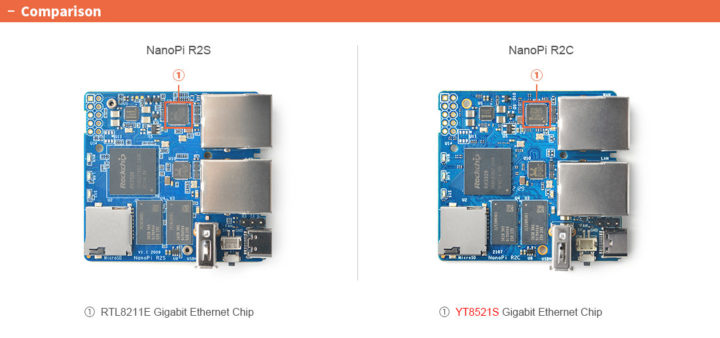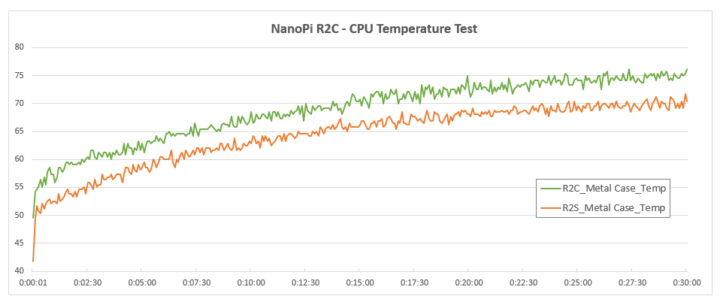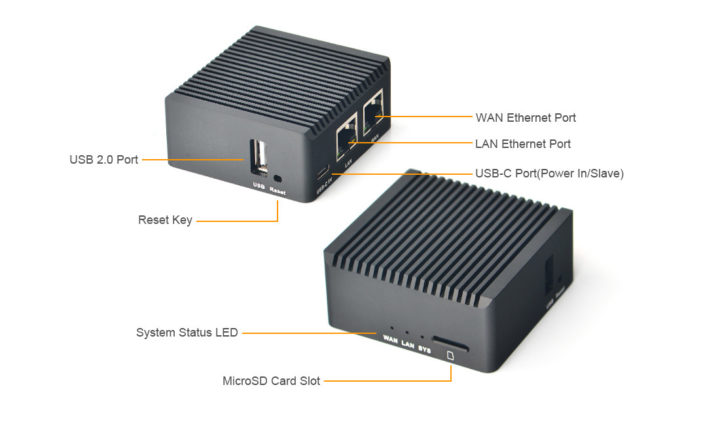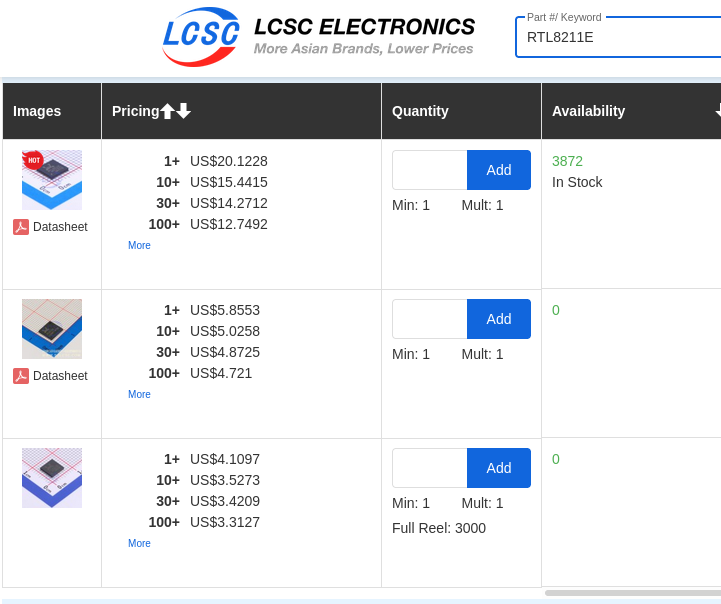FriendlyELEC’s NanoPi R2C is an updated version of NanoPi R2S dual GbE mini router that replaces Realtek RTL8211E Gigabit Ethernet transceiver with a Motorcomm YT8521S chip.
NanoPi R2C mini router still comes with a Rockchip RK3328 quad-core Cortex-A53 processor, 1GB DDR4 memory, and a Realtek RTL8153 USB 3.0 to Ethernet controller for the second Ethernet port.
- SoC – Rockchip RK3328 quad-core Cortex-A53 @ 1.5 GHz with Arm Mali-450MP2
- System Memory – 1GB DDR4 RAM
- Storage – MicroSD Slot, SPI flash footprint
- Connectivity
- 1x Gigabit Ethernet (WAN) up to 941 Mbps (measured) via MotorComm YT8521S Gigabit Ethernet transceiver
- 1x Gigabit Ethernet (LAN) up to 941 Mbps (measured) via Realtek RTL8153 USB 3.0 to Ethernet controller
- USB – 1x USB 2.0 Type-A host port, USB Type-C port
- Debugging – 3-pin 2.54mm pitch header for serial console
- Expansion – 10-pin GPIO header with GPIOs, I2C, UART, IR_Rx, 5V, 3.3V and GND
- Misc – 3x LEDs (WAN, LAN, SYS), K1 reset button, fan header
- Power Supply – 5V/4A DC via USB-C port
- Dimensions – Router: 60 x 60 x 29.5 mm; SBC: 55.6 x 52mm
- Weight – About 76 grams with enclosure
- Temperature Range – -20 to 70

FriendlyELEC still claims the measured performance is the same, e.g. 941 Mbps with iperf with the new chip, but the system runs a little warner albeit still within an acceptable temperature that does not accept the CPU performance.

You may wonder why FriendlyELEC made the change… I don’t it boils down to this year’s semiconductors supply and cost issues. Last year, NanoPi R2S sold for $25 with the board, and $32.99 with the metal enclosure, and now the price has gone up to $45.90 for the latter.
It’s easy to see why, as checking for RTL8211E availability on LCSC shows the only place with stock sells the chip for about $20 per unit, or $12.7492 per piece for 100 or more units order, which would represent a significant part of the BoM cost. The “normal” price for RTL8211 chip used to be under $1.
Motorcomm is a fairly new (2017) company based in Suzhou, China, and I can not find YT8521S for sale online, but it must be much cheaper and possibly compatible with than RTL8211E, which allows NanoPi R2C to be sold for $39 with the metal case. FriendlyELEC does not offer NanoPi R2C as an SBC only. As usual, you’ll find documentation on the Wiki.

Jean-Luc started CNX Software in 2010 as a part-time endeavor, before quitting his job as a software engineering manager, and starting to write daily news, and reviews full time later in 2011.
Support CNX Software! Donate via cryptocurrencies, become a Patron on Patreon, or purchase goods on Amazon or Aliexpress






